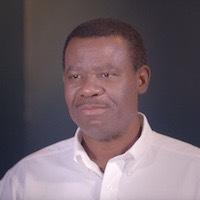Category Archives: Guidance
The Super Simple Secret to Outwitting Overwhelm
Not all that long ago, I went through a period where I felt overwhelmed and stuck. Beneath my frustration was curiosity about where it was coming from and what was the best way to move beyond it.
One day, as I was watching my young son do his homework, I had a fascinating and frustrating insight.
This kid is really smart. And his homework is just not that hard for him. He could finish it in the time it takes to make a peanut butter sandwich. But seconds after he would pull it from his backpack a whole new dynamic came into play. It was as though a huge brick wall suddenly erupted from the page and grew a hundred feet tall.
He’d sit and stare at his paper. He’d complain about all the work he had to do. He’d worry that he wouldn’t be able to do it right (or at all). And then he’d become completely fixated on any little thing that captured his attention. A bug. A drop of water on the counter. The way the numbers on the digital clock change with each minute. And hours could go by before he had even touched his pencil to paper.
After watching for a while, I heard myself telling him, “In the time it takes you to moan and complain about it, you could have it done! You can get through this easily – you are so smart!” But nothing I said was getting through.
And then I realized that my son was a mirror image of me when I get overwhelmed.
It’s not that what must get done is all that difficult.
It’s that my mind had a way of magnifying things several times their normal size so that it felt like I must tackle Mount Everest when in reality I only needed to take a little walk around the block. I told myself stories (sometimes consciously and other times unconsciously) about how hard things will be or how long they would take – especially things that were new to me.
And then I’d fall into my old, familiar pitfall of trying to make everything perfect. Before I even realized what was going on, I felt totally exhausted and depleted. And then I needed relief—even just doing something that’s easy—so I could check a box and feel like I had accomplished something, anything.
Once I realized where my son got it, I decided to stop trying to teach him and let him teach me.
In addition to showing me what was standing in my way, he reminded me that all the words in the world don’t make a difference when you are trying to teach someone to do something you have not yet mastered. Kids learn through action, not words. And so do adults.
I knew that to help my son (or anyone else for that matter) in even the smallest way, I had to get busy working on myself. And then a new question arose: how can I overcome a lifetime of perfectionistic patterns that keep me from doing what’s necessary to achieve my grandest visions and goals?
With that question at the top of my mind, I went for a run. As with just about any of my runs, the first few minutes were tough. I was tired and stiff. It wasn’t fun. But I just kept going. And then I fell into my zone. My legs felt lighter. My breathing evened out. My head started to clear. I was actually enjoying myself. I ran a little faster and a little harder. It felt good.
And then I had a second, equally powerful insight.
To break out of the perfectionism trap—to get out of overwhelm, to free myself from my own self-imposed prison—I simply needed to get into action. Even one tiny step toward my desired goal would help – though at first it may be uncomfortable, messy, and far from perfect. And then I could take another, and another and another, until l finally I reach my zone.
Over the last several months, I have found that the more diligence and effort I put into those first few steps, the more quickly I get through that “warm up” period and into a place where I can make some real headway – and even have some fun in the process.
So that’s my simple plan for getting and staying unstuck. And when I need a little more motivation and inspiration, I just go hang out with my son for awhile.
“Life is like riding a bicycle. To keep your balance, you must keep moving.” ~Albert Einstein
Overwhelm is just one of the many states that keep us from taking action toward our goals and visions and doing our best work. If you are interested in learning more about how to find your optimal zone of performance so that your work becomes less cumbersome and more enjoyable, check out The Pinocchio Principle Unleashed: The Real Leader’s Guide to Accessing the Freedom & Flow of Your Authentic Genius, kicking off the week of September 23rd.
This 13-week leadership development program will help you find and stay in your optimal zone of performance so that your work becomes less cumbersome and more enjoyable. It’s designed to help high achieving professionals get better results and make a bigger impact while enjoying their lives more – both on and off the job.
Registration will close soon. Save your seat today!
The Gift of Chaos (and How to Leverage It)
“Chaos often breeds life, when order breeds habit.”
~ Henry B. Adams
Like many of us, I grew up thinking that things happened in a linear way.
First this, then that. One building block upon another in a definite order. Cause and effect. But over the years, I’ve noticed that life isn’t always like that.
Often it seems life is a series of random events that don’t seem to make much sense.
But when you have a larger vision and experience that vision as though it has already happened, you can begin to see this apparent chaos in a whole different way. Often what we experience is a chain of seemingly disjointed events that are in reality very connected.
Think of watching a movie of a glass shattering, only in reverse motion.
Pieces fly together from all directions in a disjointed fashion and assemble into a perfect whole. Each piece is absolutely necessary, though, in and of itself, incomplete and inconceivably connected to a larger picture.
We will experience ups and downs and travel roads that deviate from what we anticipated.
Nevertheless, these seemingly divergent paths may in fact be prerequisite to experiencing the totality of our vision. At times the healing process entails pain, discomfort or other symptoms. While we may point to these as signs of illness, we could alternatively consider them evidence of our recovery.
Seasons will change, and so will we.
A phase of growth and expansion is often preceded by a period where things unexpectedly fall away. We can look at the void as a loss, or recognize it as the space necessary for new creations to take root and flourish.
We may not initially realize the significance or relevance of our chaotic experiences.
But in hindsight we often realize the importance of enduring specific challenges, setbacks, delays, or what felt like irrelevant nuisances. These obstacles give us a greater perspective on who we are, deeper appreciation for where we have been and where we are going, and compassion for others who have experiences similar to our own.
As we rise up to these little challenges, we find strength we didn’t know we had and realize we are far greater than we thought we were. And as leaders, we can help others appreciate and leverage their own chaos as well.
Appreciating the perfect order unfolding in our lives more of an art than a science.
Most of us never really take the time to recognize it. If you are interested in leveraging the seeming chaos in your own life and life’s work, I encourage you to consider enrolling for the fall session of The Pinocchio Principle Unleashed: The Real Leader’s Guide to Accessing the Freedom & Flow of Your Authentic Genius, kicking off the week of September 23rd.
The program is filling up – and it is a great group of people so far! Enrollment is limited – click the link to save your seat.
Give Presence: 3 Steps for Creating the Gift That Everyone Needs Most
Can you recall the last time you felt totally and completely attended to?
Chances are it wasn’t when someone was giving you advice or telling you what to do. It may not have even been when someone was engaging in an activity on your behalf or watching you tear open a gift. And yet when we think of giving something to others our minds often immediately jump to what we can do, say or buy for someone. Many times, the best gift we can give someone is that of our presence.
But what exactly is presence?
The word present derives from the Latin past participle praesse meaning “to be before one”, from the roots pra – pre + esse – to be. I believe presence is a state of being that’s achieved when we are truly in the moment, allowing it to unfold without judging it, labeling it, or getting lost in our thoughts about what it means or what we believe should be happening next (or instead).
Presence allows us to cut through the clamor of our preoccupations, worries and fears so that our true selves can emerge. It is a gateway through which our intuition and inner wisdom enters and expresses itself. A moment of presence is a state of grace that can produce great insights that help us to truly learn from our experiences, make the most of our opportunities and rise up to our challenges in creative ways.
In these moments of presence, we know who we really are and what we are truly capable of.
Have you ever noticed that people tend to match each other’s intensity and tone when they are together? Comments about trivial matters are often matched with similar banter. Expressions of fear or dread often elicit responses that are equally charged, and expressions of anger have a way of provoking reactions that people later regret.
In a similar manner, moments of presence when shared with others can evoke powerful responses that can be revealing and transformational.
This is because when you are truly present with another human being you create a space that allows that person’s true self to come out as well. This is why the best leaders have learned to become comfortable with silence, to listen more than they talk, and to allow themselves to become instruments that help others to recognize their own greatness – not necessarily through anything that say or do, but rather through moments of presence that are created and shared with others.
So how does one cultivate a moment of presence?
It is really rather simple, though far easier said than done.
- The first step is to be still. That’s right. Sit still. I know it goes against everything you were probably taught about getting things done and being useful. But do it anyway. You can practice now, while you read this. Become aware of your breathing, of the space you are sitting in, of the weight of your body and how it feels in this moment. Feel the life inside you and trace it to each part of your body. Listen to the sounds around you. Take a deep breath. Let it out slowly.
- Become aware of your thoughts. Observe the activity of your mind as it continues to process whatever is there– thoughts like, “this is silly, really – I have way too much to do to be sitting here, doing this…” and “I have to remember to call so and so back today,” and “What did my [boss, colleague, friend, etc.] mean when he/she said…”. Recognize that you are not your thoughts, but rather the thinker of your thoughts. Simply watch them parade around, without getting sucked into them. Feel how much bigger you are than all of that. Continue to breathe it in.
- Step three…. There really is no step three. Simply continue to repeat steps one and two, immersing yourself more deeply into the experience with each breath. You don’t need to do this for an extended period of time, unless you want to. Often even a couple of minutes are sufficient to bring you to a more intense state of awareness and aliveness.
In these moments of presence, you will experience things on a different level – one that allows you to respond from a deeper, wiser part of yourself. And when you are with others, you will bring out that deeper, wiser part of them as well. Presence is incredibly powerful to practice with others. The process is the same, except that you expand your awareness to take in the other person as well.
Look into their eyes, and listen to what they are saying. But listen to what they are not saying as well. Presence is more about being than doing. So allow yourself to truly BE with another, devoid of judgments, labels, and agendas. When you listen from this place, you are like water to a thirsty plant, allowing others to open up and soak in needed nutrients.
And in this space, they may just find the answers they seek as well – not because you are giving them, but because you have created a space that is illuminating for everyone.
For more on cultivating presence and how it can enrich both your leadership and your life, check out The Pinocchio Principle Unleashed: The Real Leader’s Guide to Accessing the Freedom & Flow of Your Authentic Genius. Registration for the fall session is now open!
This 13-week leadership development program is designed to help high achieving professionals bring out their very best performance in such a way that fills them up rather than depleting them – and allows them to make a bigger impact doing meaningful, inspiring work while leading others to do the same.
The program will kick off in late September and go through early December. Enrollment is limited, so save your seat as soon as you can.
Want to Do More? You Should Start by Doing Less
What are you longing to create for yourself?
And what do you need to let go of to allow it to fully take root?
We are a goal driven society that is conditioned to seek more.
Our egos desire more money, more fame and prestige, and more stuff. A deeper part of ourselves longs for more peace, more meaning, and more purpose in our lives. We want to move beyond our previous realizations of what we’ve already accomplished to master newer, better ways of doing things—whether that be what we create in our lives or in our organizations—and as leaders what we can inspire others to do as well.
What if you started with less instead of more?
Though it is tempting to occupy ourselves with thoughts of how we can go about achieving all of this and what we need to do more of, perhaps what we really need to start with is what we need to do less of – what we need to let go of to create the space for something new to come in.
We are constantly evolving as human beings.
It is so easy to look to the past to define who we are through the things we’ve already done – goals we’ve achieved, titles we’ve acquired, and creations we have built. Our previous experiences coagulate to form an identity that is easy to confuse with our true nature.
The fact of the matter is, you are not your accomplishments, your creations, or the sum of the various roles you play in your life – manager, director, vice president, mother, father, friend, son, daughter, etc. You are much, much more than that. Your potential is limitless.
And yet, we limit ourselves by definitions of who we think we are – or should be.
They filter the experiences we allow ourselves to have and compel us to define the form that our deepest longings should take. To be happy, we reason – we must get that promotion, achieve this or that goal, hit that target. So we continue to go through the motions, doing the kinds of things we’ve always done – on a sort of autopilot.
Some of this may bring satisfaction, and some may lead to discontentment.
We need to attune ourselves to that which brings us the most of what we truly desire and open ourselves to the possibility that what we really want may need to come in a form that has previously been undefined for us. In short, we must allow ourselves to surrender what we think we know to open to the mystery that is unfolding in each of our lives.
Easier said than done, right?
How exactly do you go about letting go of the known when it is all you know?
We can take our cues from nature. Snakes and other reptiles shed their skin, trees drop their leaves, and caterpillars create cocoons in which their forms entirely dissolve before recreating themselves in the form of butterflies. Even a fish in a bowl cannot stay in water that contains its excrement – the waste must either be emptied and replaced with new water, or absorbed by something else that will remove it from the fish’s environment. Without engaging in these renewing processes, these creatures will die. And so it is with us. Many of us are already walking around encased in layers of old, dead stuff that needs to be released.
What are you holding onto in your life that has run its course?
- What are the old outmoded ways of doing things that no longer bring you energy?
- What are the things you’ve acquired that you no longer need?
- What beliefs are you holding onto that are no longer true for you?
Pay attention to the times that you feel constricted, anxious, or tired and in those moments ask what you can let go of. Don’t be afraid of the answer. Though it may frighten you because it introduces an element of the unknown, following these insights will always lead to freedom and liberation.
Your computer can only handle so much data, and the same is true of you.
If you do not delete old email and get rid of files that have been accumulating over the years, and if you continue to add new programs without deleting old ones, you will find that it becomes sluggish and unresponsive. Just as freeing up space allows your computer to process things more quickly, so too will clearing your own personal space (whether of things or thoughts) allow you to access new levels of clarity and creativity.
Space brings freedom.
You will breathe easier, be more present in every action and interaction you partake of, and bring more of who you really are to what you do. And you will open the space of possibility that will allow something to come in that may surprise and delight you. Rather than being something you slave away for, it will simply emerge and reveal itself to you.
And of course, any work you do on yourself will serve as a form of leadership for others who, like you, seek their own answers and could benefit from your example of unearthing what is possible and allowing it to take form in new and unexpected ways.
Taking the time to discern what is and isn’t working in your life and up level your game becomes easier and more fun when you have support.
If you are ready to do a deep dive to supercharge your leadership and your life, I encourage you to check out The Pinocchio Principle Unleashed: The Real Leader’s Guide to Accessing the Freedom & Flow of Your Authentic Genius, an exclusive 13-week leadership development program designed to help high achieving (and often overextended) leaders minimize pressure and stress so they can access their best work — and enjoy their lives more both on and off the job.
Though the spring program has now closed, registration for the fall program will open soon. To get on the waiting list, email Support@DianeBolden.com.
Why Losing Your Passion for Work is a Bigger Problem Than You Might Think
Has work become a bit of a grind?
 You might tell yourself that work isn’t supposed to be fun — that’s why they call it work. But when you spend the majority of your waking hours just getting through the day or counting down to the weekend, you have a bigger problem than you might think.
You might tell yourself that work isn’t supposed to be fun — that’s why they call it work. But when you spend the majority of your waking hours just getting through the day or counting down to the weekend, you have a bigger problem than you might think.
Most of us don’t start our professions that way, but over the years, disappointment, frustration and pressure can lead to disillusionment, disengagement and burnout. Lack of passion and joy on the job will hit you hard in three major areas:
(1) Personally
(2) Professionally, and
(3) Organizationally
Let’s take a look at how work becoming a grind affects you personally
You might think that as long as you can enjoy yourself after five (or six, or seven) and on the weekends, you will be just fine. But when you spend the better part of your day on a kind of autopilot, feeling like you’d rather be somewhere else, it’s hard to keep that negativity from spilling over to the rest of your life.
You may find yourself irritable, preoccupied, exhausted or just brain dead. And whether you know it or not, that infringes on your ability to fully enjoy the things, experiences and people in your personal life that you hold most precious.
You may even have a decent paycheck and enjoy a position of influence and status in your organization. But when the work you spend more of your waking hours doing is a continual grind, it’s easy to begin feeling as though life itself lacks meaning and fulfillment.
Perhaps you’ve made the decision (consciously or unconsciously) to put your personal happiness on the back burner in the name of your professional success and upward mobility.
Well, unfortunately lack of passion and joy on the job has a negative impact on your professional effectiveness as well. Let’s take a closer look at that.
Productivity
You can try all you want, but when you are exhausted and overwhelmed you will work very long days spinning your wheels without getting a whole lot accomplished. You may think you just don’t have enough time to finish everything on your plate. And while it is true that time is finite, your real problem is lack of energy.
Creativity and Problem Solving
Lack of energy makes everything take far longer than it should. It blocks you from accessing your creativity, leads you to unnecessarily complicate things, and pushes the solutions to your problems just out of reach. All of this will contribute to a feeling of being unable to get important things done, which will cause you to work longer hours and become even more exhausted.
Influence
If your job requires you to have even the slightest degree of influence over others, consider this: Getting someone excited about doing something is largely a matter of sharing your enthusiasm. But enthusiasm isn’t something that is easily feigned. And when you try to fake it, you will come across as being disingenuous, which will keep others from trusting you.
It’s exceedingly difficult to get anyone — whether it be your coworkers, your direct reports or your customers — to become excited about something you can’t muster up the passion for yourself. And while we’re on the subject of coworkers, direct reports and customers, let’s talk about the impact lack of passion and joy on the job has organizationally.
If you are a leader of others, whether you know it or not, you are setting the tone for the entire organization.
If you are not feeling emotionally committed, passionate, enthusiastic and connected to your work and the people you partner with to do it, chances are the people you lead will not be feeling it either.
Employee engagement
Research indicates that as much as 70 percent of U.S. workers are not engaged. That translates into people who are physically present on the job, but not emotionally or mentally all there. When people are disengaged they go through the motions, doing as little as possible to fly under the radar.
The cost of complacency
This complacency causes all kinds of problems, including low quality products and services, plummeting productivity, low creativity and innovation, strained customer relationships, intra and interdepartmental conflict, absenteeism, high turnover, and ultimately low profitability. It does little to attract key talent, and certainly does not contribute to having a competitive advantage in the marketplace.
What does that have to do with you?
Engaged employees are people who feel part of something bigger than themselves — an organization with a shared purpose that has meaning to them. And they want to work for a boss who is turned on and tuned in to the organization and them as people.
If you have no passion or joy for your own work, you will be hard pressed to inspire it in others. In fact, you could end up unwittingly sucking the joy from those who already are engaged, and/or driving them to look for work elsewhere.
In summary
Losing your passion and joy at work has significant implications for you on three different levels:
(1) Personally. You just can’t turn it on and off like a light switch. If you are feeling a lack of passion and joy at work, chances are good it will translate into your personal life, like a dark cloud that follows you around despite your insistence that you can shoe it away. You deserve more out of life than that.
(2) Professionally. The overwhelm, frustration, and exhaustion you feel is likely keeping you from performing at your best. While you may be working very long hours, your problem is not lack of time but rather lack of energy. Lack of energy is accompanied by lack of creativity, problem solving and influence. Energy comes with passion and joy. And when passion and joy are lacking, your performance will be lacking too.
(3) Organizationally. Just as passion and joy can be contagious, so too is the lack of it. A leader’s lack of passion and joy gets translated into disengagement, both for the leader, and the followers. Disengagement negatively impacts productivity, innovation, customer satisfaction, employee recruitment and retention — and ultimately profitability.
So, if you feel like work has become a grind — but not a problem you have the luxury to address right now, think again. It may well be that you can’t afford not to. Rejuvenating your passion and joy on the job is easier than you think. And it doesn’t necessarily mean that you have to find another job.
But that’s a subject for another article…
Looking to get away from that grind and reignite your passions? Check out the The Pinocchio Principle Unleashed: The Real Leader’s Guide to Accessing the Freedom & Flow of Your Authentic Genius, an exclusive 13-week leadership development program designed to help high achieving (and often overextended) leaders minimize pressure and stress so they can access their best work — and enjoy their lives more both on and off the job.
Though the spring program has now closed, registration for the fall program will open soon. To get on the waiting list, email Support@DianeBolden.com.
Centered in Conflict
 When was the last time someone caught you off guard with a piece of feedback or a message that felt like an attack? How did you respond?
When was the last time someone caught you off guard with a piece of feedback or a message that felt like an attack? How did you respond?
If it took you by surprise, chances are for a moment you may have lost your balance, moving either away from the bearer of the message, or toward him or her (literally or figuratively). If you leaned away, in an effort to avoid conflict or to crawl inside your comfort zone, you may have withheld your point of view or any response for that matter. If you leaned forward, you may have thrust your point of view upon the other in a way that was more like a counter attack than a response. Or perhaps you accommodated and sacrificed your own needs in order to maintain harmony. Either way, you fell away from your center – your true place of power.
What does this mean? If I am too attached to my own point of view, I am likely to force it on others and become rigid to anything that doesn’t seem to fit with it. When I am stiff and lean too far forward, I am easily knocked over. On the other hand, if I forget what I know and allow others to dictate what I believe, I will lose my footing and become easily manipulated.
But if I can get to a place of curiosity, where I can really listen to what someone else is saying and be willing to test my own assumptions without automatically believing they are absolute, I will be relaxed, agile, and strong. When I am pushed, I will absorb the shock by allowing myself to be temporarily moved, and then come back to center – my place of strength. I can integrate what others are saying, broaden my perspective, and allow myself to grow stronger as a result. From this place of strength I will engage in communication that is far more productive.
Most of us will be knocked off balance periodically. We may find ourselves swaying from one direction to the other. But each time it happens, we can practice coming back to center – being willing to let go, relax, listen, and adjust accordingly. In doing so, we will learn and grow. We will transform ourselves and set powerful examples for others. And in so doing, we will truly lead.
“Blessed are the flexible, for they shall not be bent out of shape.”
~ Michael McGriffy, MD
If you’re feeling a bit off balance check out the The Pinocchio Principle Unleashed: The Real Leader’s Guide to Accessing the Freedom & Flow of Your Authentic Genius, an exclusive 13-week leadership development program designed to help high achieving (and often overextended) leaders minimize pressure and stress so they can access their best work — and enjoy their lives more both on and off the job.
Though the spring program has now closed, registration for the fall program will open soon. To get on the waiting list, email Support@DianeBolden.com.
The Masterpiece in the Marble: 3 Steps to Unearth Your Best Work
We’ve all been to a lot of classes – whether on leadership or related subjects – where we sit passively and listen to someone teach us things from a workbook or a power point presentation. Some of these classes infuse us with new ideas and inspirations, and others do not. Either way, the chief challenge is coming back to our daily work and implementing what we have learned. Class or no class, putting into practice the ideas and insights we get on a daily basis is a challenge. It is a challenge because it calls for us to integrate them into a way of doing things that we have established for ourselves over a long period of time.
To change, grow or improve in any way, we must consciously look at ourselves.
We need to look at both what is working and what is not. Often we are so accustomed to running from project to project and meeting to meeting, that we aren’t even aware of the dynamics at play under the surface. This frenetic approach leads to a pattern of similar results, similar experiences, and inevitably similar frustrations, and often the feeling that there has to be more to it than this.
There is.
The truth is, you already possess within you the core essentials you need to be successful.
The question is, are you using them? And are you using them to the best of your ability? If the answer is no, it doesn’t matter how many new tools you acquire or methodologies you learn. Our chief challenge is not to continue looking to others for solutions and answers, but instead to take the time to tap that part of ourselves that remains our purest potential. The prerequisite for being an effective leader of others is to learn to lead ourselves.
Michelangelo once said “The masterpiece is already in the marble.”
The same is true for each of us. Our chief task as leaders is to chip away at the stuff that surrounds the masterpiece. What stuff? You may ask. The habits, patterns and approaches you’ve been utilizing over the years that are no longer getting you the results you want. And the inaccurate beliefs, assumptions and doubts you have about yourself, others, and what is generally possible in any given situation. These are the major factors that keep you from unearthing your best work.
So how do you chip the away at the extraneous?
The part that is especially challenging for people is that they often don’t even realize they are operating from a mindset that isn’t serving them. They may recognize the results they’re getting aren’t what they’d like without necessarily realizing that the core issue lies within them. And the tricky thing is that until you recognize that the mindset you have isn’t serving you, you will continue to make decisions and attempt to solve problems operating within the very frame of mind that is keeping you from seeing the outcomes you want.
Here are some steps you can take to shift into a way of thinking that allows you to bring out your very best – and in the process help others to do the same.
The first step is to TAKE RESPONSIBILITY.
The next time you have an experience that doesn’t go the way you’d like it to, replay it in your mind and try to identify the role you played in it –not only with your actions (or lack of action) but also your thoughts – what you were believing at the time, where your focus was, and how others reacted to you. Ask yourself what you would do differently next time. Then envision what that would look like and feel like if you were to have the same situation, but a more favorable response. In this way, you can allow your experiences to teach and mold you into something better – even the ones that are less than optimal.
The second step is to PAY ATTENTION.
You are bound to fall into old patterns again and again, but the more you become aware of them, the less compelling they become. At first you may not catch yourself until after the fact, but over time you will find you can interrupt the cycle sooner, until finally you are able to head it off at the pass and choose a different response altogether.
The third step is to IDENTIFY WITH THE MASTERPIECE, NOT THE MARBLE.
You are not your thoughts, your patterns or your habits. You are much bigger than that. Once you are aware of how those things are operating in your life, you free yourself up to choose new ones. Rather than chipping away at the marble, you will begin to grow from within it, busting through the constraints that no longer hold you captive. Instead of dwelling on your limitations, focus on your strengths. Instead of putting your attention on the things you don’t want to see, begin identifying with what you do want and recognize that you have the ability to achieve it.
As you begin to clear the debris from your view, you will see things in a whole different light – including those around you that you have the opportunity to lead. These folks are far more likely to take their cues from your action than your words. And when you begin to help them identify with their masterpieces as you have learned to do, there is nothing you cannot achieve.
If you are interested in additional strategies for inspiring and motivating yourself and others to higher levels of performance and impact – as well as greater fulfillment both on and off the job, check out The Pinocchio Principle Unleashed: The Real Leader’s Guide to Accessing the Freedom & Flow of Your Authentic Genius, an exclusive 13-week leadership development program kicking off the week of April 1st.
How to Get What You Really Want
I ask my clients and myself this question. We answer:
- I want things to go my way.
- I want to come out on top.
- I more wins and fewer losses.
- I want my problems to disappear.
- I want to be profitable.
- I want to be successful.
- I want to be respected.
All understandable, relatable.
But the follow-up question is just as important.
“What would that give you?”
This one stumps people. But the answer is usually something about getting peace of mind, satisfaction, happiness and a feeling that all is as it should be in the world.
What if you could have that now?
Sign you up, right?
It starts by recognizing that that the quality of your day – the feeling of getting what you want – is a direct reflection of your thoughts.
Here’s an example of what I mean.
You are about to go into a high-pressure meeting.
You know what you need to do to come out on top. Of course, you want to win, you want to be respected and your agenda dictates that the meeting must unfold in a certain way. Already your mind has created a definition of winning, of GETTING WHAT YOU WANT, that involves you playing your part and others in the meeting playing the part you have imagined for them.
If things don’t go exactly the way you envision, you are disappointed.
You may feel disrespected. If they do go your way, and someone else loses in the process because they must bow to your agenda, then the victory of that win is likely to fade quickly, leading you to seek another win.
What if you go into that same high-pressure meeting with a different mindset?
A mindset that views the meeting through the lens of all parties winning – even if the way to do that was not part of your original agenda? Go into the meeting seeking the best solution for everyone and watch what happens.
Up leveling your mindset allows you to see new possibilities and get better results.
Your mind will begin to entertain the thought that there could actually be a solution in which everyone wins. As a result, you will listen more intently. You will ask different questions. You will be more genuinely interested in what others have to say, because they are an important part of your solution. You will show respect others, and in so doing receive respect.
If you hold the intention of a meeting that everyone walks away from feeling better than when it started, you’ll go into that meeting with a quiet confidence, faith, trust and patience. You’ll take comfort in the wisdom of the group. You’ll start to find you are NOW getting what you want.
It sounds too easy.
Magical even. It’s no wonder since we’re conditioned to believe that we have to do something to get what we want, whether that’s money, respect or peace.
Let’s start again.
Think about whatever your mind if most occupied with and ask the question, What do I really want?
And then, what would that give me?
Take those questions to a higher level, one in which everyone involved benefits in some way.
Feel the ultimate end state as though it has already happened, even though you have no idea how it will happen. Can you rest in the certainty that things will happen in everyone’s best interest?
Let it flow.
Then as you go about your day or face this situation, let your actions flow from the state of mind you wish to achieve. Over time, you’ll realize that instead of having to see it to believe it, what you see will be a direct reflection of what you believe. Allow yourself to believe in the highest possible good for everyone, let go of how it will happen and watch miracles unfold in your life and those of everyone around you.
You won’t have to do anything to achieve that peace of mind, satisfaction and a feeling that all is as it should be because you already possess it.
This process is just one of the many techniques taught in The Pinocchio Principle Unleashed: The Real Leader’s Guide to Accessing the Freedom & Flow of Your Authentic Genius to help you get the results you want with less stress and greater fulfillment. This exclusive 13-week leadership development program kicks off the week of April 1st and is limited to the first 25 people who enroll. Reserve your spot today!
How to Up Level Your Game by Upgrading Your Internal Programming
Imagine that software you’ve relied on for years stops working for you.
You notice that it has been freezing up a lot. At first, it didn’t really bother you. But now these little glitches are happening so often that you’re having trouble getting things done.
When you look into the problem, you find you are not the only one that has been experiencing it. Much to your relief, a new version of the program is being rolled out that has fixed all the bugs. And happily, this updated program is now available for you to download.
The same thing happens to each of us.
We are cruising along doing what we’ve always done only to find it just isn’t working so well anymore. We aren’t getting the results we wanted. Or worse, what worked before is actually causing new problems. And despite our best efforts, these problems are throwing a big monkey wrench in things.
So how do you find a bug in your program?
First, you start by recognizing that you aren’t getting the results you want. And then you work backward. Finding the bug in your program requires that you detach from your actions in such a way that you can observe and evaluate them.
One way to do this is to replay events in your mind to identify any causal factors.
You can do this in the car on the way home from work as you mentally review the day’s events and evaluate what went well and what didn’t. You can journal about it. Or you can talk with someone who is an objective third party, like a friend, family member, mentor or coach.
The bug in your program is almost always a knee jerk reaction.
Knee jerk reactions are the product of conditioning—what happens when a behavior becomes so automatic that you no longer need to think about it. And conditioning is good when it leads you to behave in a way that is constructive—like when you practice a new skill over and over again until you can do it without having to remind yourself of each step.
But conditioning that leads you to spring into action when what you really need to do is give a little more consideration to your response can get you into trouble.
There is a neurobiological component to conditioning.
Every time you practice something or respond to a stimulus in a certain way, you are creating neural networks in your brain. Neurons that fire together wire together. And the more they fire, the stronger and more automatic their connections (and your behaviors) get. Conversely, when a neural network is interrupted or not used for a certain period of time, these connections begin to weaken.
Once you have identified the bug, you can begin to eliminate it.
Simply being aware of a knee jerk reaction will begin to loosen its grip on you. This is not to say that someone could instantaneously eradicate a bug and immediately improve his or her results. It takes time. Awareness is half the battle.
Initially, errors are not caught until after the fact, but with increased awareness and attention, you can notice them sooner and sooner. The time it takes to realize blunders drops from hours to minutes, and, with continued diligence, you’re able to take steps to correct them in real time. Ultimately, you can get to the point where you can prevent yourself from engaging in this automatic reaction altogether.
As the bug is eliminated, the program can be upgraded.
Upgrading the program is a matter of replacing an old behavior with a new one. Unlike software upgrades, this one doesn’t isn’t a matter of a simple download. It requires attention, thought and persistence.
As mentioned previously, neural networks that correspond to old, undesirable patterns of behavior weaken when they are not engaged. And as they weaken, repeated practice allows new neural nets to be formed that support a more desirable behavior.
But doesn’t creating new neural networks require a huge amount of practice?
The interesting thing about the formation of these neural networks is that they do not have to happen in real time. Research has shown that mentally rehearsing a new pattern of behavior leads to the same growth in neural networks that physical practice does.
Really. If you replay the situation you wish you could have handled differently and “edit” your action to the desirable choice, you are literally rewiring your brain to act the correct way in the future.
Doing so will allow you to create and increasingly rely on new neural networks when in situations that necessitated different responses. Gradually, you are able to replace your tendency to demand compliance with a more thoughtful, respectful, and engaging approach to influencing others.
Let’s review the process of upgrading your internal programming:
- Step One: Find your bug. The first step is to recognize when you have a tendency to engage in behavior that keeps you from getting the results you desire. Most likely this will be a knee jerk reaction that propels you into action before you have a chance to think.
- Step Two: Disempower your bug. Becoming aware of behavior you fall into and the impact it has on your effectiveness ultimately weakens its hold on you because while it still may be automatic, it is no longer unconscious. Though falling into old patterns when you know better is frustrating, this awareness is a sign of tremendous progress.
- Step Three: Substitute a new program for the old one. As your old habits and the corresponding neural nets that lead you to engage in them begin to weaken, you can replace them with new behaviors. The more you practice these new behaviors (whether physically or mentally), the stronger the new neural networks and your new patterns will become. And the less you engage the old behaviors, the weaker and less prominent the old neural networks (and the corresponding behaviors) get.
If you find yourself engaging in behavior that is interfering with your effectiveness, the most important thing to remember is that you are not the program that is running it. You are the programmer. You have the ability to consciously choose the behaviors and the responses you have to any given stimulus.
Though interrupting and upgrading your internal programming takes time, the results will be well worth your effort. And the best part is that you don’t have to lodge a complaint with or rely on anyone but yourself in order to do it.
Now if only we could keep those darn devices from freezing up!
If you are interested in additional strategies for upgrading your internal programming so that you can access your very best performance, I encourage you to check out The Pinocchio Principle Unleashed: The Real Leader’s Guide to Accessing the Freedom & Flow of Your Authentic Genius an exclusive 13-week leadership development program kicking off the week of April 1st.
Feel Like You’re Spinning Your Wheels? How to Get Unstuck
Have you ever had a really hard time getting something done? Something big?
When you are up against a large task or project, it’s easy to become overwhelmed by the details and the magnitude of what is before you. Sometimes it hard to know where to start, and once you do it can feel like a never-ending process. To make matters worse, when the project you are working on necessitates that you do something new—something uncomfortable and challenging—it often elicits fear, frustration, and anxiety. All of these things can keep you feeling stuck.
In a state of overwhelm, the focus goes from the joy of getting something done to the aggravation of having something undone.
We can become mechanized in our attempts to figure out what needs to get done and exactly how to go about it. We may also put a lot of pressure on ourselves and beat ourselves up for things we haven’t done, rather than recognizing and acknowledging ourselves for what we have done.
In what is often an unconscious attempt to regain a sense of control, we are easily lulled into doing things that we know will be easier and potentially more enjoyable.
Some tasks don’t really need to get done right now (or ever) or should really be delegated to others, but we often prefer those. Some of the time-wasters we get sucked into include surfing the web, making idle conversation, cleaning out your inbox, or—my personal favorite—making more lists of everything we think needs to get done and identifying all the steps we need to take. This is actually a great thing to do when you’re focused, but, in a procrastination mode, it becomes to planning to plan—and then plan some more—until you have a rock solid strategy that you never actually execute.
It may feel like you are spinning your wheels—running like hell and just not getting anywhere.
I know this, of course, because I have been there. Repeatedly. And I’ve worked with others who fall into this pattern, as well, to stop the madness by recognizing what’s happening and making a shift to get back on a road that leads them where they need to go.
One of the most powerful things I have found for breaking out of a “spinning your wheels” cycle is to take some time to revisit your purpose—or the larger mission or goal behind what you are doing.
- Get clear about what—or who—the work is for.
- Identify how it will improve the quality of life for yourself or those around you.
- Reflect on the degree to which it will help people, contribute to something greater, or allow you to achieve a meaningful goal for yourself.
This doesn’t have to take hours and hours. Just pause for a few moments and ask, when this project/task/ initiative is finished, what larger goal or purpose will it accomplish? What would you like to accomplish? Write it down. Add to it as you think of additional bonuses. Then, sit for a moment and see if you can envision what it would feel like to satisfy that larger purpose, vision or goal. See if you can feel it so clearly that you are actually grateful for it.
This simple act will help you reconnect with something inside you that will propel you beyond the minutia. It will give you the courage and strength to walk through your fear or resistance to do something that you may not be so good at yet. And it will help you to get back to the joy that comes through the process as well as the attainment of the end goal.
When you approach things in this manner, all that you do will be instilled with a new energy—one that uplifts, delights, and inspires.
Whatever you experience as you work on a project will be the same thing people will feel when they partake of the fruit of your efforts. The more we remember this, the more we will experience the satisfaction and gratification of having done something truly meaningful—something that lifts us out of the humdrum and into a place of brilliance. And all who come into contact with our work will be better off because of it.
Interested in additional strategies and practices for getting out of overwhelm so you can have more traction, make a greater impact, and infuse more life and meaning into your work? Check out The Pinocchio Principle Unleashed: The Real Leader’s Guide to Unleashing the Freedom & Flow of Your Authentic Genius.







